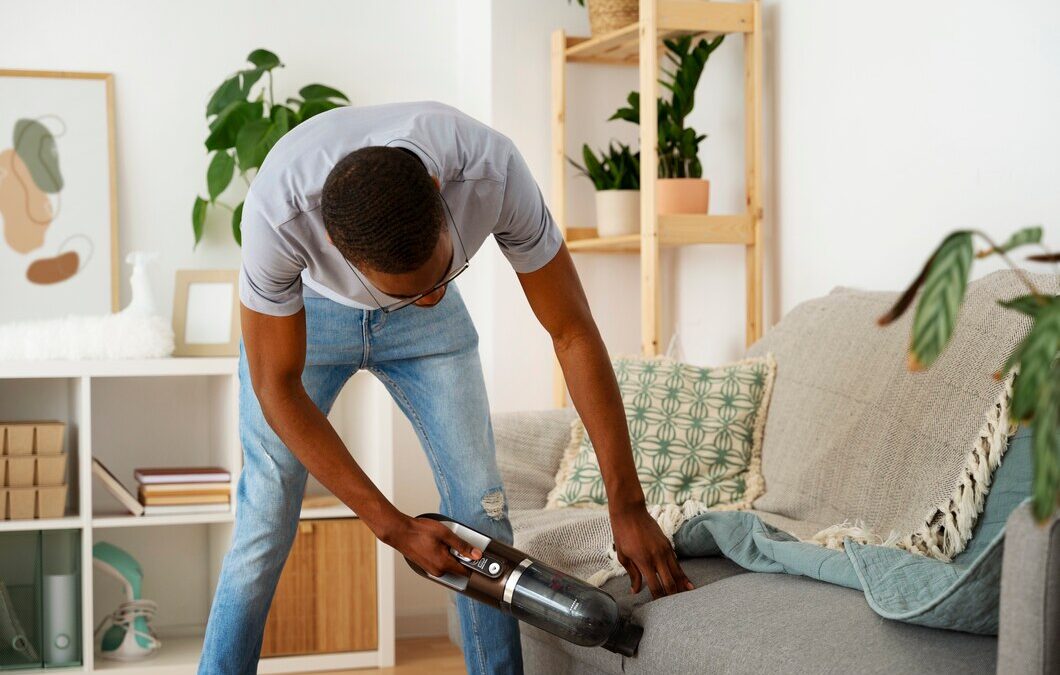Upholstery and furniture cleaning is essential for maintaining your pieces’ cleanliness, appearance, and longevity. As a homeowner or renter, you’re likely to have questions about how these professional cleaning services work and tips for keeping your furnishings in top condition.
In this article, we’ll address the most common concerns and misconceptions related to upholstery and furniture cleaning, offering valuable insights and advice to help you make well-informed decisions.
1. What types of upholstery and furniture cleaning services are available?
Professionals use various upholstery and furniture cleaning methods, each designed to address specific types of materials and levels of soiling. Here are some of the most common methods:
- Steam Cleaning: Also known as hot water extraction, this method involves using heated water and a cleaning solution to remove dirt and stains from upholstery and furniture. The mixture is sprayed onto the fabric and subsequently extracted using a powerful vacuum.
- Dry Cleaning: This method involves using a specialized cleaning solvent to remove surface dirt and debris without using water, making it the preferred choice for delicate fabrics prone to water damage or shrinking.
- Foam Cleaning: This method uses a foamy cleaning solution that is applied to the upholstery, agitated with a brush to loosen dirt, and then vacuumed away. Foam cleaning provides effective cleaning results with a quicker drying time than steam cleaning.
- Leather Cleaning and Conditioning: Leather furniture requires cleaning solutions specifically formulated for leather surfaces. After cleaning, a conditioner moisturizes and protects the leather, ensuring its longevity and maintaining its appearance.
2. How much does upholstery and furniture cleaning cost?
The cost of upholstery and furniture cleaning services varies depending on several factors, including:
- The type and size of the furniture: Larger pieces, such as sofas, will typically cost more to clean than smaller items like armchairs or ottomans.
- The material of the furniture: Some fabrics require specialized cleaning methods or products, which may affect the overall cost.
- The level of soiling and staining: Heavily stained or soiled items may require additional cleaning steps or treatments, potentially increasing the cleaning cost.
Although prices vary, upholstery and furniture cleaning services often charge per item or by the square footage of the item being cleaned. For an accurate quote, contact a reputable cleaning company like us for a tailored estimate.
3. How should I prepare for an upholstery and furniture cleaning appointment?
To prepare for a professional upholstery and furniture cleaning appointment, follow these steps:
- Clear clutter: Remove any personal items or clutter from the furniture to ensure cleaners can easily access all upholstery areas.
- Vacuum: Gently vacuum your furniture to remove surface debris and dust before cleaning begins. This will help improve cleaning efficiency.
- Protect floors and surrounding items: Place a protective sheet or tarp beneath the furniture to catch any dripping water or cleaning solutions, especially if the cleaning method involves water usage.
4. How can I maintain my upholstery and furniture after a professional cleaning?
To extend the life and appearance of your upholstery after a professional cleaning, incorporate these maintenance tips:
- Vacuum regularly: Regular vacuuming will help remove surface dirt, dust, and debris, preventing them from becoming embedded within the upholstery and causing soiling or staining.
- Rotate cushions: Regularly rotating them can ensure even wear and help maintain their shape and appearance.
- Utilize fabric protection: Applying a fabric protection spray can help guard against spills and stains, making subsequent cleaning easier.
- Address spills promptly: If a spill occurs on your furniture, gently blot the stain immediately with a clean cloth to prevent it from setting into the upholstery. Be careful not to rub the stain, which can spread it further or damage the fabric.
- Schedule regular professional cleanings: Even with diligent maintenance, professional upholstery and furniture cleaning is recommended every 1 to 2 years to maintain the appearance and extend the lifespan of your furnishings.
5. Are professional upholstery and furniture cleaning services safe for all fabric types?
Most professional upholstery and furniture cleaning services are familiar with a wide range of fabric types and will be able to assess the best cleaning method for your specific furniture. However, it is always advisable to consult with the cleaning company and provide information on the fabric type and any care labels that may be attached to your furnishings. This will ensure the appropriate cleaning method is used, preventing any potential damage to your upholstery.
6. Can upholstery and furniture cleaning eliminate pet odors and allergens?
Upholstery and furniture cleaning can effectively remove pet odors, allergens, and other pollutants that can settle into fabrics and contribute to lower indoor air quality. Professional cleaning methods, such as steam cleaning and specialized odor treatments, can target and neutralize the source of odors while simultaneously removing allergens and other contaminants from your upholstery.
Unlock the Benefits of Expert Upholstery and Furniture Cleaning
Professional upholstery and furniture cleaning services offer numerous advantages for maintaining the beauty and longevity of your furnishings. By understanding the various cleaning methods, costs, and maintenance tips, you can make informed decisions about preserving the appearance of your home’s interior.
Ready to experience the remarkable difference professional upholstery and furniture cleaning can make? Reach out to Excel Carpet Services at (513) 822-4190 to learn more about their comprehensive range of cleaning solutions and schedule a consultation. Trust their commitment to quality, eco-friendly practices, and over 25 years of industry-leading expertise to care for your upholstery and furniture cleaning needs.



